Search the Special Collections and Archives Portal
Search Results
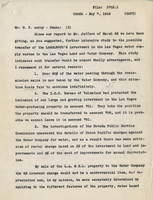
Letter from W. H. Hulsizer (Omaha) to G. F. Ashby (Omaha), May 7, 1942
Date
Archival Collection
Description
Hulsizer enumerated the many financial and political reasons that the water producing lands controlled by the Los Angeles & Salt Lake Railroad Company should be sold to the Las Vegas Land and Water Company.
Text
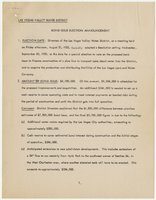
Bond issue election announcement by Las Vegas Valley Water District to eligible voters within district (Las Vegas), 1953
Date
Archival Collection
Description
Notice of special election for bond issue for the Water District including the reasons for the issue. Document includes information election date, amount of bond issue, voter eligibility, registration, purposes of bond issue, revenue, expenses, estimated water rates, financing, water consumption, and Lake Mead supply.
Text
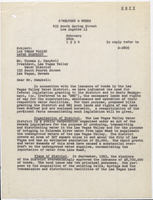
Letter including legal opinion from Franklin T. Hamilton (Los Angeles) to Thomas A. Campbell (Las Vegas), February 24, 1954
Date
Archival Collection
Description
Mr. Hamilton, as representative of the law offices of O'Melveny & Myers addresses Mr. Campbell, president of the Las Vegas Valley Water District, outlining facts about the Las Vegas Valley Water District, Basic Management Inc., history of land and water rights, and the issuance of bonds.
Text
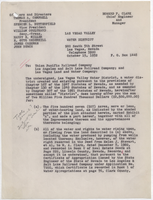
Draft offer of Las Vegas Valley Water District to purchase the water production lands and facilities of the Las Vegas Land and Water Company and the railroad, October 15, 1952
Date
Archival Collection
Description
Draft offer of Las Vegas Valley Water District to purchase the water production lands and facilities of the Las Vegas Land and Water Company and the railroad. R. L. Adamson's red pencil edits are handwritten. Accompanies letter (see Is referenced by). Draft has penciled corrections in the margins.
Text
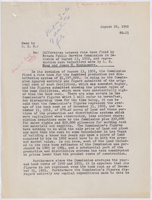
Memo from Edward C. Renwick to E. E. Bennett about the purchase price given to the Las Vegas Valley Water District, August 26, 1952
Date
Archival Collection
Description
Detailed discussion of why the purchase price set by the Nevada Public Service Commission for the purchase by the Las Vegas Valley Water District was too low.
Text
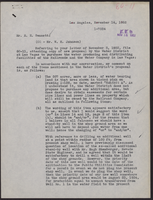
Letter from R. L. Adamson (Los Angeles) to E. E. Bennett, November 14, 1952
Date
Archival Collection
Description
Discussion of needed revisions for the contract for the Las Vegas Valley Water District's purchase of water production facilities and land from the Union Pacific Railroad.
Text
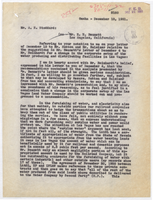
Letter from W. R. Rouse (Omaha) to A. E. Stoddard, December 18, 1951
Date
Archival Collection
Description
Suggestions that the Railroad should develop its own water so that it will not be subject to rationing as experienced by other water districts. Dividing the water production from all other assets of the Las Vegas Land and Water Company may be the best option for the Railroad to protect its water rights.
Text
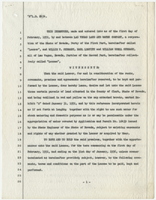
Lease agreement between Las Vegas Valley Land and Water Company and Willie T. Stewart, Earl Leavitt, and William Udell Stewart, Las Vegas, February 1, 1951
Date
Archival Collection
Description
Lease of the Las Vegas Ranch by Las Vegas Land and Water Company to Willie T. Stewart, Earl Leavitt, and William Udell Stewart. The document lists 13 terms and conditions including such topics as land use, water use, and fiscal responsibilities. "Exhibit A", which is referenced below, is mentioned in lease term number two and shows specific areas of the ranch . The area outlined in yellow was to be used for dairy operations and the red outlined area for grazing purposes.
Text
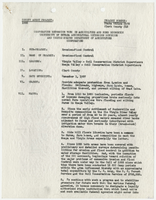
County agent project report, Erosion-flood control, April 1938
Date
Archival Collection
Description
Summary of situation, goals, duties of cooperating agencies, and procedures regarding the effort to prevent flooding and erosion threatening properties and silting Lake Mead. Cooperative extension work in agriculture and home economics, University of Nevada Agricultural Extension Division and United States Department of Agricultural Cooperating. Project Number: State Office #172, Clark County #12.
Text
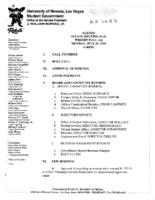
Meeting minutes for Consolidated Student Senate University of Nevada, Las Vegas, July 25, 1994
Date
Archival Collection
Description
Text
